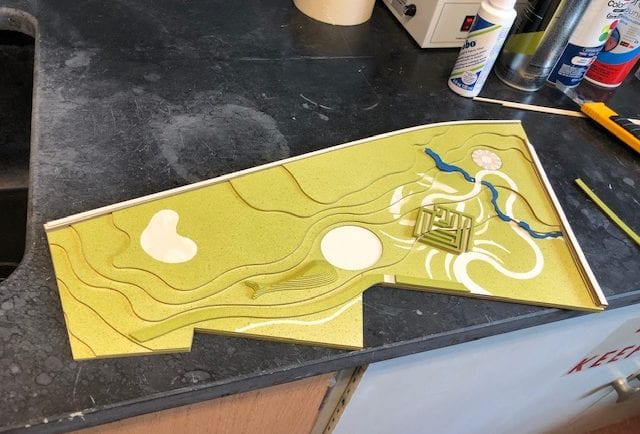Peter Minuitti, Director of the Landscape Architecture program at UConn and my third mentor on this project, once asked his students, “What is a Garden of Eden?” Being one of his students and a Catholic, I was sure it had something to do with a lush green paradise, maybe with fruit trees, and perhaps even some wildlife (yes I was thinking about snakes). But it didn’t, at least not necessarily. According to Peter, a “Garden of Eden” must touch each of one’s five senses. If it doesn’t affect all of them, then the few that it touches, it must do so strongly. There were other prerequisites to meet in the definition given that day, but to me, this was the cornerstone: in essence, sensory stimulation. The idea was not to just be an observer but to be touched, affected, perhaps even changed by the encounter.
When I visited the Alhambra in Spain more than two decades ago, it touched me like no other. It wasn’t just the plants that struck me, but also the design. The Moorish arches, the symmetry, the pools and runnels of water, the hardscaping, the statuary . . . the unbelievable strength of the place captivated me. Years later, as I sat in that lecture hall, I finally understood why the Alhambra had affected me so profoundly. It not only touched all of my senses, it slammed into me as if trying to awaken something. Putting the pieces together, I realized that this feeling was something I wanted to recreate for others. It took more course work and two internships to understand who I wanted to create gardens for and how I arrived at creating this children’s garden.
Working on the Avery Point garden design with Peter and Natalie Minuitti, and Tao Wu from the LA Department is such an incredible experience for me. I feel so lucky to have that kind of guidance and support! Today they showed me the 3D model that Tao is building of the garden. It is so tiny and perfect, even though it’s not quite done yet. Each little detail is painstakingly cut out and glued on so that others will be able to see the garden as a whole. I’ll be able to take this model to the different libraries and events to promote the garden and talk about the importance of sensory experiences in nature.
As Tao is literally “putting the pieces together,” on the model, we as a community, are putting the pieces together in the garden. It is my hope that this garden will touch those who visit in some way . . . to inspire, to heal, to calm, to excite, or just maybe to create a sense of wonder so that they may indeed feel as though they are in a Garden of Eden.


